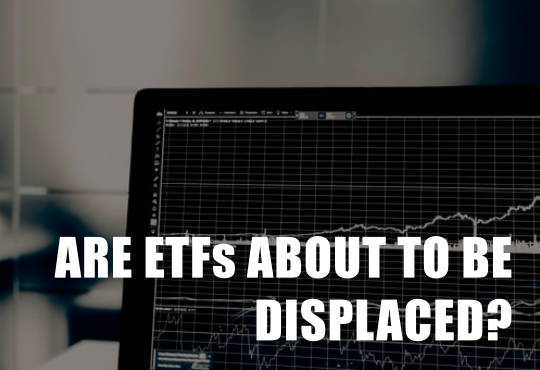Direct Indexing is quickly emerging as the new shiny investment vehicle for individual investors. Similar to how ETFs disrupted the financial industry two decades ago, Direct Indexing is set to follow a similar path.
Most of us are familiar with index funds, a mutual fund or ETF that replicates the performance of an index by owning each of the individual stocks/components in the same weighting as the index (e.g. TSX 60 or S&P 500). Direct Indexing is similar, but instead of owning the mutual fund or ETF, the individual investor own all the individual components as well. Now you might think why would anyone want to do that, instead of owning the ETF or mutual fund. The answer lies the ability of the investor to manage tax more efficiently, incorporating Environmental, Social and Governance (ESG) into even the smallest portfolios and customize based on their goals or investment ideas.
In the past two decades, consumers have learned to love customization. Music streaming supplanting CDs and Netflix tailoring of movie recommendations are just some of the new ways consumers have been given the power to choose. It is likely these same trends will hit the investment industry. It started with ETFs and Direct Indexing could be next. Individual investors have always been able to pick out a handful of individual stocks, but for people aiming for broad exposure, prepared products such as mutual funds or ETFs have been their only option.
Although still in the early stages, Direct Indexing is here, and recent acquisitions in the fund management industry shows that companies believe this is the next big growth area. Just last year, Blackrock and Morgan Stanley placed bets on mass-market offerings: BlackRock Inc. bought Aperio Group LLC, while Morgan Stanley bought Eaton Vance Corp. and its subsidiary Parametric Portfolio Associates LLC, by far the largest player in the Direct Investing space.
Direct Indexing gives investors the ability to pick and mix their stock holdings as easily as they select songs for their playlist. So, if individual investors wanted to obtain broad exposure to the U.S. market, they could choose a direct indexing product that gives them ownership of each of the individual stocks in the S&P 500, or a fraction of each share. Thanks to new technology, fractional shares and commission-free trading, customizable funds are becoming much simpler to roll out to the masses. With software, it becomes easy to maintain thousands of portfolios and rebalance them to whatever suits the investor.
Managing Tax
For investors, managing the tax implications of their investments with mutual funds and ETFs has always been a challenge. With Direct Indexing, the process of tax-loss harvesting (selling holdings to incur a capital loss that can be used in the future to offset capital gains) can be incorporated to pick and choose which gains or losses to recognize within their Direct Indexing portfolios. As well, investors can now control the timing of taxable gains. Previously, investors in mutual funds would be at the mercy of mutual fund managers buying and selling decisions that could impact their taxes payable. Consider the scenario where an investor purchases a mutual fund on Wednesday, and the fund sells one of is holdings on Thursday for a large capital gain. The new investor would have to pay taxes on his or her por-rated percentage dating back to when the mutual initially purchased the stock even though the investor did not benefit from holding the stock.
Incorporating ESG
Direct Indexing also solves the difficult problem for sustainability-minded investors. There is no shortage of environmental, social and governance funds on the market, but investors and asset managers may not always agree on what counts as green or responsible. With direct indexing, investors do not have to go out and select a whole new fund, they can just drop and add whatever stocks they want. Perhaps you want to invest in the S&P 500 but wish to exclude weapons manufacturers. Instead of buying 490 or so S&P stocks that don’t sell weapons, which would be time-consuming and expensive, you would leverage technology to quickly create an index that excludes these stocks based on pre-screened research done by the Direct Indexing providers.
Customization
Perhaps the most appealing dynamic of Direct Indexing is the flexibility of customizing an index to meet an individual’s investment criteria or even personal values — such as the ability to exclude fossil fuels from a portfolio or to support companies with female leaders. Other use cases involve investors building investment strategies that invest in an entire index, but exclude companies or sectors that are expected to underperform. Also, for those executives that hold large amounts of their company stock, they might want to exclude that stock from their own investment holdings to ensure they have more diversification.
The costs of Direct Indexing portfolios will be key to their growth and be a determining factor in their adoption. Current offerings are not as cheap as basic, vanilla ETFs that track a major index like the S&P 500, but they are more competitive against ETFs or funds that have a more strategy-based approach.
Direct Indexing will not be for all investors. It is hard to discredit the simplicity of receiving a monthly statement with one holding (of say an index fund or S&P 500 ETF) and gauging performance of that one security. With a Direct Indexing strategy, an account holder receives statements with information about every security owned, which can count into the hundreds for a widely held index.
These drawbacks may result in direct indexing seeing a more gradual uptake than ETFs, however, the benefits are compelling and would seem to outweigh the negatives over the long run.


